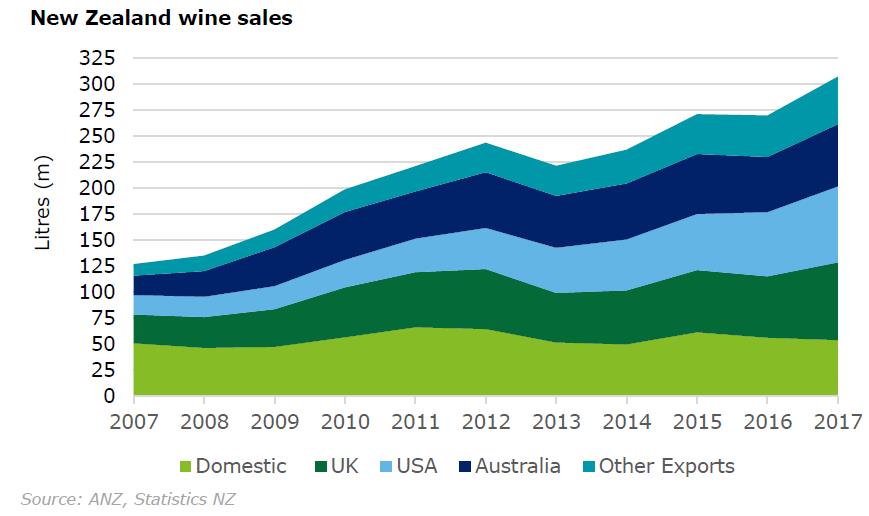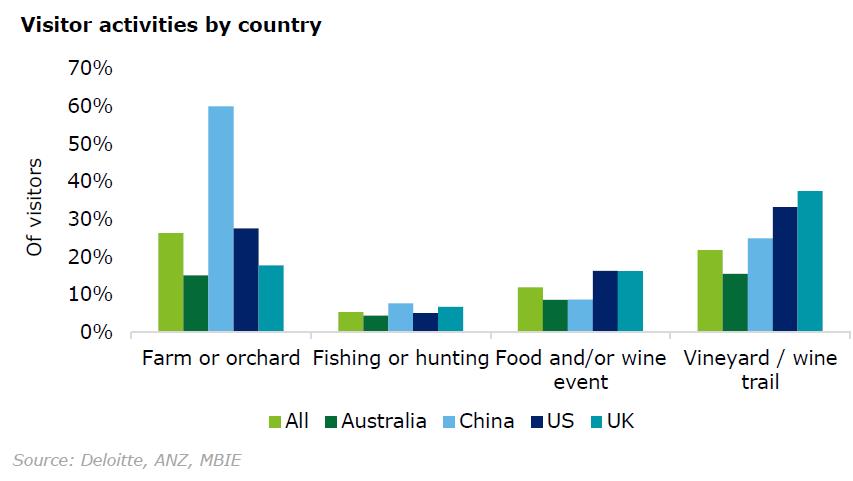-
Living on a vineyard in the heart of New Zealand wine country, Rob Simcic is excited about the opportunities ahead.
“Wine tourism remains a key growth market for New Zealand’s wineries,” he says. “Particularly smaller producers who sometimes struggle to compete with the big guns,”
"[Regional NZ areas] are wising up to the relationship between wine and the booming tourism sector.”
“It presents a unique chance to engage with consumers directly. If wineries get that right, they can follow up with back-to-back sales when those tourists get back home.”
{CF_IMAGE}
Marlborough, where Simcic is based, remains very much the jewel in the winery crown for New Zealand. But other regions are wising up to the relationship between wine and the booming tourism sector.
“We know wine tourists spend more,” he says.
Arrivals
The recently released Deloitte-ANZ Wine Industry Benchmarking and Insights survey confirms the statement.
According to the study, in 2017 total international visitor arrivals to NZ hit 3.2 million. Of those arrivals, 22 per cent visited a vineyard or winery, spending a total of $NZ10 billion.
Those visiting wineries spend $NZ4,500 per visit, significantly higher than the average of about $NZ3,200.
They also stayed longer (23 nights), the study showed, and visited more places (four to five regions in total).
{CF_IMAGE}
“Like the rest of the world, we’re waking up to the consumer demand for the artisan craft approach,” Simcic says. “We are seeing a real trend across all food and beverage, and that is attracting a premium.”
While running a vineyard in Marlborough is more of a hobby, Simcic’s role as head of Food and Beverage for ANZ gives him a unique insight into just how much growth the sector is generating.
“The wine industry continues to go from strength to strength,” he says. “We’ve just had a record year for exports, topping 200 litres [in our key markets] for the first time, earning $NZ1.7 billion in export revenue.”
“What we are also seeing is the diverse contribution the industry is making to regional communities across New Zealand.”
According to the Deloitte-ANZ survey, the regional contribution is significant.
An overview of the country’s wine regions showed Hawkes Bay dominating North Island production, with Auckland being home to a large number of wineries and ‘head office’ employees.
{CF_IMAGE}
The South Island includes the vastly dominant region of Marlborough, which produced over 300,000 tonnes in 2017 (almost 80 per cent of total vintage) with a small workforce of local residents.
“Interestingly, Central Otago contains an almost equal number of wineries and cellar doors as Marlborough, despite only producing 8,300 tonnes in 2017,” the report says.
Cellar doors
“When we look at cellar door numbers, there are more cellar doors in Auckland region than anywhere else despite it being a smaller wine producing region,” Simcic says.
{CF_IMAGE}
“Wider Wellington, the Wairarapa region, also has a large number of cellar doors. So the thinking is we are seeing that crossover of domestic and international tourism and the proximity to those larger areas.”
There are also opportunities for Central Otago, Canterbury, the top of the South Island and through Hawkes Bay and Gisborne.
“When you look at a region like Marlborough which accounts for about 80 per cent of our exports we can see that it’s not far off being planted out. “
“That could be five years away, it could be 10 years. That presents challenges but also opportunities in other regions around New Zealand.”
Connecting
While wine tourism is a great way of connecting directly with consumers, Simcic says wineries need to think about how to create lasting experiences. Engaging online, through mobile and social media is a necessity, he says.
“In the USA the fastest growing distribution channel is online, and we are seeing similar in Australia,” he says. “That growth is coming from the right end of the market, growth in Australian online retailers is in the $NZ10 to $NZ25 a bottle range, which is a good place to be.”
“That is because they are stocking more of the premium and boutique labels online. So it is certainly high growth and we do expect that to continue.”
The Deloitte-ANZ study showed increasing direct-to-consumer (including online) sales volumes had grown particularly among smaller producers.
Overall, the outlook for NZ wine is bright with international visitor numbers forecast to grow to 4.9 million in 2023, presenting a huge opportunity for the sector showcase and market New Zealand’s unique story to the world.
Briar McCormack is bluenotes NZ editor
The views and opinions expressed in this communication are those of the author and may not necessarily state or reflect those of ANZ.
-
-
-
-
anzcomau:Bluenotes/business-finance,anzcomau:Bluenotes/Agriculture
NZ wine tourism ripe for the picking
2018-01-23
/content/dam/anzcomau/bluenotes/images/articles/2018/January/maja-petric-8287.jpg
EDITOR'S PICKS
-
New Zealand has reached a mature stage in the economic cycle. Historically, sharp slowdowns have followed such periods - but ANZ research does not believe the cycle is about to roll over and expire.
31 March 2017 -
Is there further upside for New Zealand’s booming wine sector? The answer is yes. An export industry which has experienced strong growth in recent years, NZ viticulture has played an important role in providing a new source of grow for the country’s agribusiness sector.
13 September 2016




